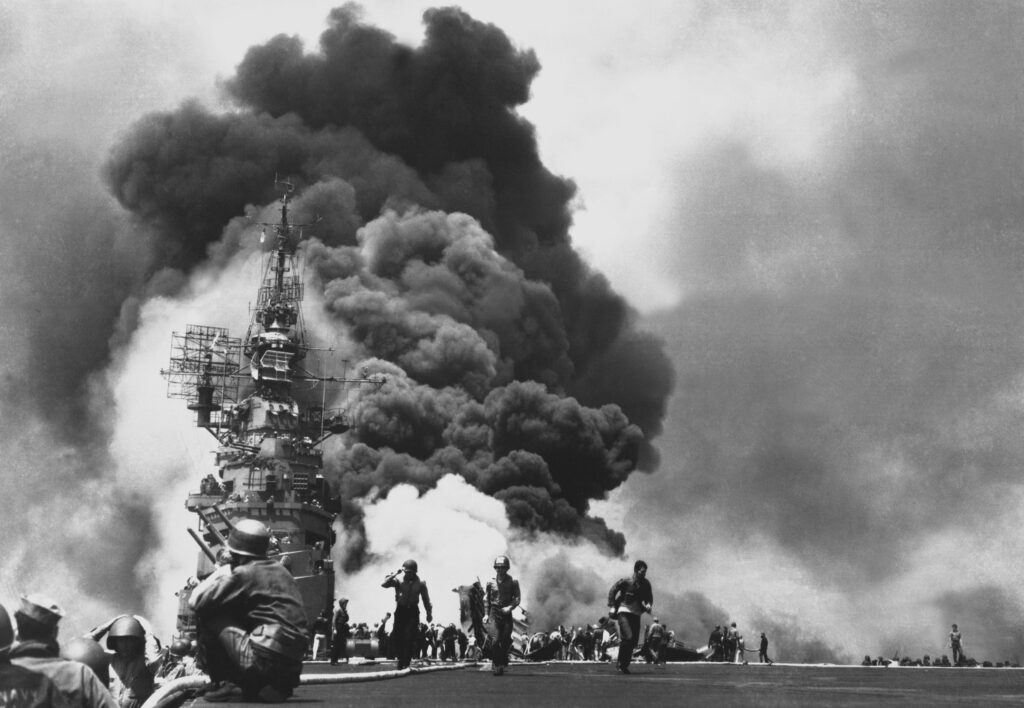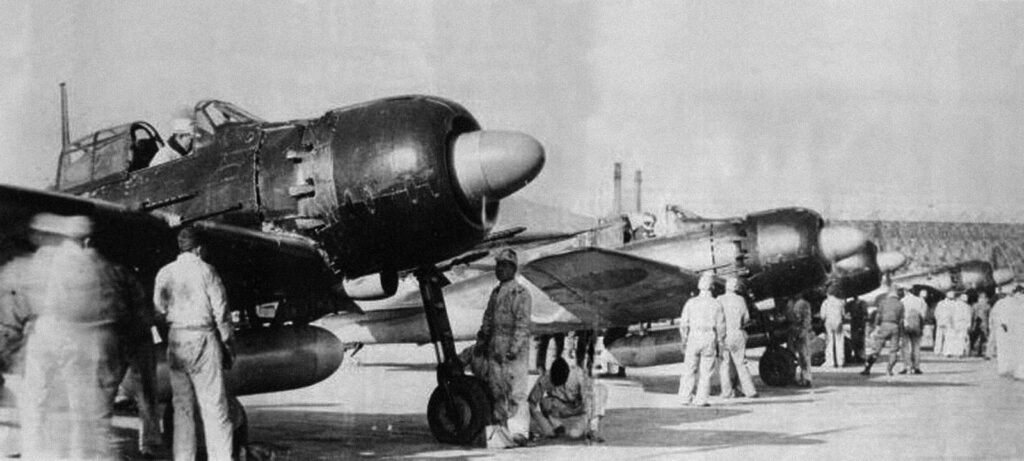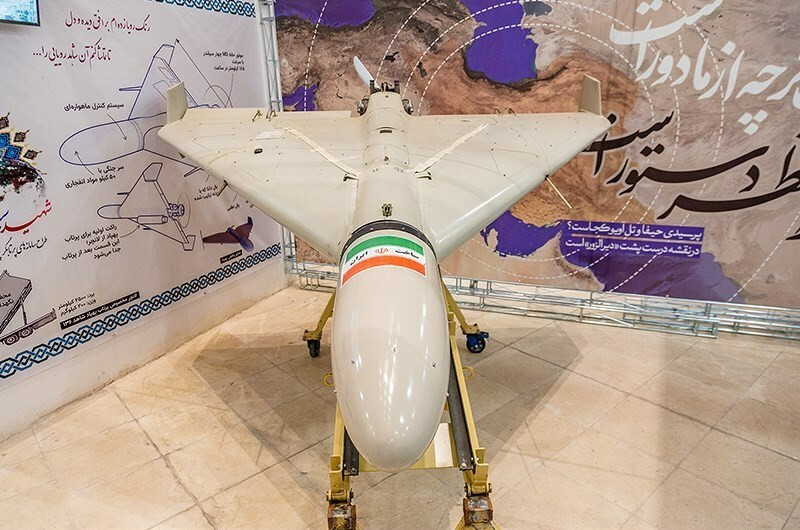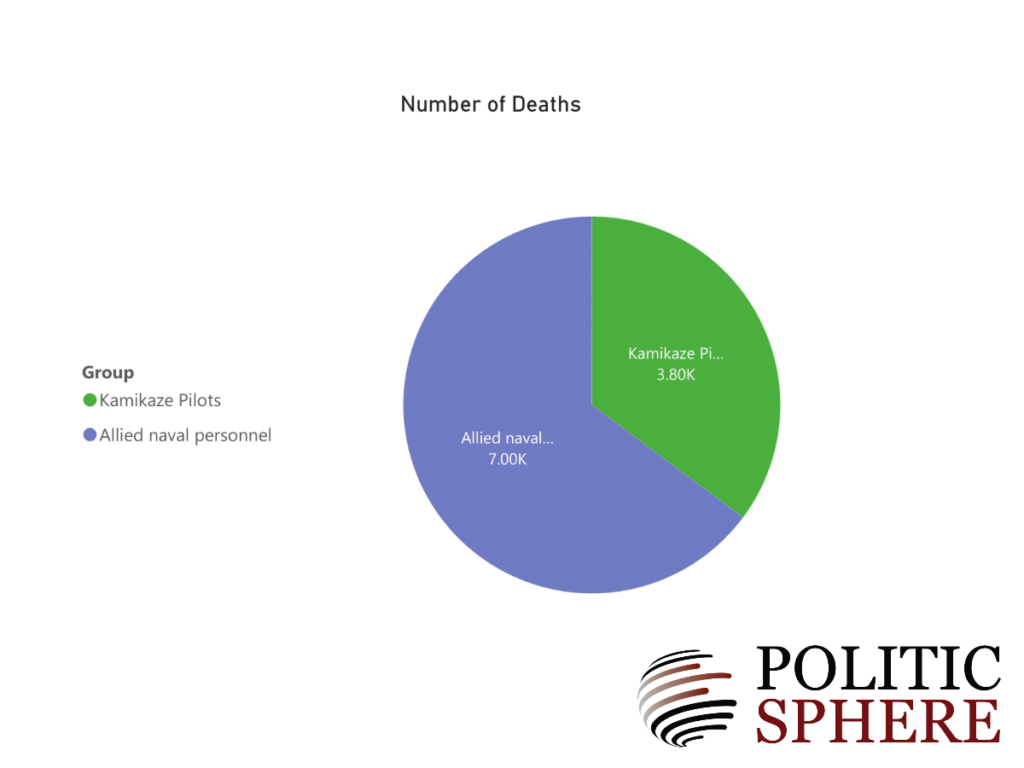In military history, kamikaze attacks during World War II have fueled intense debates. These were suicide missions where Japanese pilots directed explosive-laden aircraft at Allied ships. The term “kamikaze” translates to “divine wind” in Japanese and symbolizes a pilot’s ultimate sacrifice for their nation.
The debate over whether these attacks constitute war crimes is complex. It involves international humanitarian law, non-combatant protection, and military engagement rules. Some see kamikaze attacks as desperate wartime measures, while others view them as unforgivable breaches of the laws of war.
This blog delves into the legitimacy of kamikaze tactics, their compliance with the Geneva Conventions, and their relevance in modern warfare ethics. We also examine their broader implications for warfare, soldiers, and societies. Join us as we navigate history, law, and ethics to understand the legacy of kamikaze attacks within the ongoing war crime debate.

Significance of the War Crime Debate
The war crime debate surrounding kamikaze attacks holds significant importance and continues to generate discussions among historians, legal experts, and ethicists. Several vital points contribute to the ongoing debate:
Targeting Non-Combatants
One argument against kamikaze attacks as war crimes centres around their deliberate targeting of non-military personnel or civilian targets. Critics contend that these attacks aimed to harm innocent lives, violating international humanitarian law.
Violation of the Principle of Distinction
The principle of distinction, a fundamental aspect of the laws of war, requires combatants to differentiate between military targets and civilians or civilian objects. Some argue that kamikaze attacks disregarded this principle by intentionally targeting non-military vessels, blurring the line between legitimate military targets and non-combatants.
Desperate Circumstances
Kamikaze attack supporters emphasize Japan’s desperate situation in the later stages of World War II. They argue that these acts arose from a sense of duty, patriotism, and the belief that such sacrifices could alter the war’s course. Proponents say that the conflict’s exceptional circumstances should be considered when assessing the legality and morality of kamikaze attacks.
Evolution of Warfare Norms
The war crime debate also considers the evolution of warfare norms. Some argue that condemning kamikaze attacks as war crimes should be based on the prevailing norms of that time rather than retroactively applying contemporary standards.
Historical Context of Kamikaze Tactics
The kamikaze attacks during World War II emerged as a tactic employed by the Imperial Japanese forces in response to their deteriorating military situation. As the Allied forces gained momentum in the Pacific, Japan found itself in a dire situation, with its naval power facing a superior adversary’s. The kamikaze tactics were born out of desperation.
These tactics involved using pilots to carry out suicidal missions by intentionally crashing their explosive-laden aircraft into enemy vessels, typically ships. The primary objective of kamikaze attacks was to maximize damage to the enemy’s naval assets. Kamikaze attacks were seen as a last-ditch effort to defend Japan and potentially alter the course of the war. The extreme nature of these tactics reflected the severity of Japan’s military predicament during the later stages of World War II.
The Allied Forces Perspective on Kamikaze Attacks
The Kamikaze attacks during World War II, left an indelible mark on the conflict, particularly in the Battle of Okinawa. In one instance, the USS Bunker Hill was struck by two kamikaze pilots in quick succession on May 11, 1945, causing a massive inferno that killed hundreds of sailors and took the carrier out of the war. The United States, recognizing the severity of this new threat, reacted with a mix of shock and resolve. They increased defensive armaments and tactics on their ships, trained gun crews to be more efficient at shooting down planes, and developed better damage control procedures to save ships and lives after attacks. The U.S. Navy also adapted its air combat tactics to intercept and destroy Japanese planes before they could reach their targets. Despite the heavy toll, the resolve of the U.S. forces contributed to their eventual victory in the Pacific, but the memory of the kamikaze attacks underscored the brutal nature of the war and the lengths to which an adversary might go when facing defeat.
Definition of War Crimes
The Relevance of the Geneva Conventions and their role
The Geneva Conventions, a series of international treaties, provide a crucial framework for defining and addressing war crimes. These conventions establish legal obligations for states during armed conflicts and offer protections for individuals who are not participating in hostilities.
The Key Principles that Define War Crimes include :
The Principle of Distinction
Parties to a conflict must differentiate between combatants and non-combatants, directing attacks solely at legitimate military targets.
The Principle of Proportionality
The use of force must be proportionate to the military objective and should not cause excessive harm to civilians or civilian objects.
The Principle of Military Necessity
Military actions must be necessary for achieving a legitimate military objective and should not exceed what is required to accomplish that objective.

By unlisted – 1. Historic Wings [1], Public Domain, https://commons.wikimedia.org/w/index.php?curid=1631577
Arguments Labeling Kamikaze as a War Crime
Targeting Non-Combatants and Civilian Infrastructure
Kamikaze attacks during World War II were primarily aimed at military targets, specifically Allied naval vessels. There are no widely recognized instances where kamikaze pilots intentionally targeted civilian property, as the strategy was predominantly used in naval battles where the primary targets were warships and military installations.
However, the nature of kamikaze attacks meant that there was a potential risk to civilian life and property. The potential for collateral damage to civilian property and lives was high due to the intensity and proximity of the conflict near civilian-populated areas.
Violation of the Principles of Proportionality and Necessity
Critics of kamikaze attacks argue they breached war crime laws, specifically the principles of proportionality and necessity. For example, during the Battle of Leyte Gulf, kamikaze pilots inflicted heavy casualties and damage, arguably beyond what was strategically required. This excessive force, resulting in a high number of deaths and the sinking or damaging of more ships than might have been necessary to impede the Allied advance, is seen as a violation of the principle of proportionality. Additionally, the principle of military necessity is called into question, as the use of kamikaze tactics was arguably not the only or last resort to achieve military goals, further suggesting these actions were war crimes.
Counterarguments Against Kamikaze as a War Crime
The Concept of Honorable Sacrifice in Japanese culture
Advocates of kamikaze attacks offer an opposing viewpoint based on the profound cultural value of honorable sacrifice in Japanese tradition. One relevant example of honorable sacrifice in Japanese culture is the practice of “Seppuku” or “Harakiri.” Seppuku involves a ritual form of suicide by disembowelment and has deep historical roots in Japan. Historically, samurai would use Seppuku as a means to restore honor to themselves or their families, particularly in cases of disgrace, failure, or to avoid capture by enemies. It was regarded as a way to cleanse one’s name and demonstrate unwavering loyalty to their lord or a greater cause, even at the cost of their own life. Seppuku was performed with great ceremonial precision and adherence to a strict code of conduct. This mirrors the perspective of kamikaze pilots who viewed their missions as acts of duty and self-sacrifice for the betterment of their nation. Both Seppuku and kamikaze attacks exemplify an unwavering commitment and a willingness to give one’s life for a cause, reflecting a deeply ingrained cultural perspective in Japanese history.
The Argument of Military Necessity
The counterargument of military necessity asserts that kamikaze tactics were a response to Japan’s dire situation during World War II. Supporters argue that the desperate circumstances required the use of kamikaze attacks as a final option. They contend that these tactics were a response to the overwhelming military superiority of the Allied forces and were viewed as a potential means to potentially change the course of the war. According to this perspective, when evaluating the legality and morality of kamikaze attacks, it is essential to consider the exceptional context of the conflict.
Ethical Implications of Kamikaze Attacks
The Morality of Utilizing Humans as Weapons
These acts involve the intentional sacrifice of human lives, a fundamental violation of the right to life and a departure from the principles of respect for human dignity and autonomy. The core human rights principle of informed consent comes into question, as concerns linger about whether kamikaze pilots freely and fully consented to their missions, particularly in cases where they may have faced coercion or societal pressure. Additionally, sending individuals on missions with the certain outcome of their death could be construed as subjecting them to cruel and inhumane treatment, potentially breaching human rights principles. The rights of the family members of kamikaze pilots are also implicated, as they bear the emotional and social repercussions associated with these tragic deaths. Overall, the concept of utilizing humans as weapons not only defies human rights but also challenges fundamental ethical and moral values.
The Psychological Impact on Kamikaze Pilots
The ethical concern of the psychological impact on kamikaze pilots centers on the immense pressure and emotional trauma endured by those who willingly participated in suicide missions. Proponents of this perspective underscore the ethical obligation to shield individuals from psychological harm, contending that the recruitment and conditioning of kamikaze pilots subjected them to significant distress and manipulation.
Comparisons with Other Tactics
Kamikaze vs. Modern Suicide bombings
Kamikaze attacks during World War II and modern suicide bombings share a controversial commonality: both use the deliberate sacrifice of the attacker’s life as a weapon. For instance, kamikaze pilots would crash their planes into Allied ships, causing destruction and loss of life, much like suicide bombers today who detonate explosives in crowded areas. Both tactics have been employed with the intent to cause maximum damage to the enemy, often with little regard for the attacker’s life or civilian casualties. While kamikaze attacks were largely aimed at military targets, the line blurs with suicide bombings, which frequently occur in civilian spaces, raising acute ethical concerns. Despite the temporal and contextual differences, the core ethical dilemma remains: the use of self-sacrifice for violent means challenges the principles of the value of human life and the protection of non-combatants in conflict.
The Use of Drones and Unmanned weapons
The evolution of warfare has seen a significant shift from the World War II kamikaze tactics to the modern use of unmanned aerial vehicles (UAVs), such as the Iranian kamikaze drones deployed in the Ukrainian conflict. These drones, also known as “loitering munitions,” are designed to linger over an area and can be directed to crash into a target, causing destruction similar to that of a manned kamikaze attack but without the loss of a pilot. This technological advancement reflects a broader trend towards minimizing military casualties by removing combatants from the immediate dangers of the battlefield. However, this shift raises new ethical questions about the essence of combat. The impersonal nature of drone strikes, the potential for increased civilian casualties due to remote targeting, and the diminished sense of personal responsibility for the operators are all aspects that echo the moral dilemmas once associated with kamikaze missions.

By Tasnim News Agency, CC BY 4.0, https://commons.wikimedia.org/w/index.php?curid=132325210
International Responses to Kamikaze
Post-War Trials and the Kamikaze question
The post-war trials, conducted after World War II to evaluate the Kamikaze question, produced varying outcomes and did not lead to a conclusive, universally accepted judgment. The issue remained contentious, with differing opinions among legal experts, scholars, and military personnel. Some contended that kamikaze attacks should be considered war crimes because they were designed to maximize damage, often disregarding the potential for disproportionate impact and extensive loss of life. Others argued that these actions should be viewed in the context of Japan’s desperate circumstances, with some seeing them as a justifiable response to overwhelming military superiority. Therefore, the question of whether kamikaze attacks constituted war crimes or were legitimate acts of warfare remained largely unresolved, reflecting the ongoing debate around this controversial issue.
The Stance of Various Countries on Kamikaze Attacks
The perspectives on kamikaze attacks varied significantly across different countries. For example, the United States and other Allied nations largely viewed these tactics as violating the established rules of engagement and international law, considering them desperate acts that reflected Japan’s extreme measures in the face of impending defeat. In contrast, within Japan, there was a sense of reverence for the kamikaze pilots; they were often celebrated as national heroes who displayed ultimate sacrifice and unwavering loyalty to their country. This contradiction in views reflects the complex nature of wartime ethics and the differing values placed on military actions by various cultures.
Legacy and Memory of Kamikaze
The Portrayal of Kamikaze in Media and Literature
The portrayal of kamikaze attacks in media and literature has been varied, often reflecting the complex emotions and ethical questions these attacks raise. In cinema, films like “The Eternal Zero” by Japanese director Takashi Yamazaki have explored the personal conflicts and nationalistic fervor surrounding kamikaze pilots.
In literature, authors such as Yukio Mishima, who was deeply influenced by the bushido code and the concept of death for one’s country, have touched upon themes related to kamikaze and self-sacrifice in their works. Mishima’s patriotism and controversial life, culminating in his own ritual suicide, echo the kamikaze spirit.
In the realm of painting, artists like Ikuo Hirayama have depicted kamikaze pilots, often emphasizing the tragic and poignant aspects of their missions. Hirayama’s work, while not solely focused on kamikaze, reflects a broader interest in the themes of war and peace, influenced by his experiences as a survivor of the Hiroshima bombing.
These creators, among others, have contributed to the public’s understanding of kamikaze attacks, offering insights into the human elements behind the historical events and ensuring that the discussions around them remain part of the cultural consciousness.
Conclusion
In conclusion, the debate surrounding kamikaze attacks as potential war crimes is a multifaceted and complex issue. This discourse delves into various aspects, including the deliberate targeting of non-combatants, adherence to the principles of proportionality and necessity, cultural perspectives, and the unique circumstances of the conflict. The discussions surrounding kamikaze attacks offer valuable insights into the ever-evolving nature of warfare and its ethical dimensions.
Moreover, comparisons with modern tactics, like suicide bombings and the use of drones, underscore the necessity of continually reevaluating the moral implications of new technologies and strategies in contemporary conflicts. The ethical considerations related to kamikaze attacks remain a crucial part of the ongoing discourse concerning the intersection of warfare, ethics, and human rights. Understanding this complex issue provides a deeper insight into the challenges faced when assessing the legality and morality of unconventional tactics during times of war.
FAQs
1. Were all Kamikaze Pilots Forced into their Missions?
Not all kamikaze pilots were subject to forced coercion for their missions. While some pilots may have experienced conscription or pressure to volunteer, others voluntarily chose to become kamikaze pilots. Factors such as nationalism, loyalty to their country, and a sense of duty motivated some pilots to embark on suicide missions voluntarily.
2. How did the International Community React to Kamikaze attacks during WWII?
The international community had varied reactions to kamikaze attacks during World War II. Allied nations generally condemned these tactics as fanatical and viewed them as acts of desperation. For example, Admiral William “Bull” Halsey of the United States expressed strong disapproval of kamikaze attacks, describing them as “contemptible.” He saw them as a violation of the laws of war and was determined to develop effective countermeasures to combat this new threat. On the other hand, Japan’s kamikaze tactics were celebrated as acts of heroism and self-sacrifice by some within the Japanese military and civilian population. They believed these actions were a response to the desperate circumstances Japan faced during the latter stages of the war.
3. Are there any Modern Equivalents to Kamikaze Tactics?
While kamikaze tactics were unique to the historical context of World War II, there are some modern equivalents regarding suicide attacks for political or ideological purposes. Suicide bombings, particularly in the context of terrorist activities, share some similarities with kamikaze tactics. However, it is essential to note that these tactics’ motivations, strategies, and ethical implications can differ significantly.
4. How are Kamikaze Pilots Remembered in Japan Today?
In Japan today, kamikaze pilots are remembered with a mix of reverence and reflection. They are often honored for their sacrifice and seen as epitomes of loyalty and bravery. Memorials and museums, such as the Yasukuni Shrine and the Chiran Peace Museum for Kamikaze Pilots, pay tribute to their memory. Yet, there’s also a nuanced understanding that acknowledges the complexity of their actions within the broader context of war and its aftermath. This remembrance is not uniform, as some advocate for a more critical view of the pilots’ roles and the nationalistic fervor that drove their missions.
5. How many Pilots Died from Kamikaze Attacks?
The exact number of kamikaze pilots who died during World War II is difficult to determine with precision. However, it is estimated that over 3,800 kamikaze pilots lost their lives in these suicide missions. Kamikaze attacks took a heavy toll on Japanese military personnel, reflecting the extreme measures taken by Japan during the later stages of the war. The number of deaths caused by kamikaze attacks during World War II is also not precisely known, but it is estimated that these attacks resulted in the deaths of around 7,000 Allied personnel






































